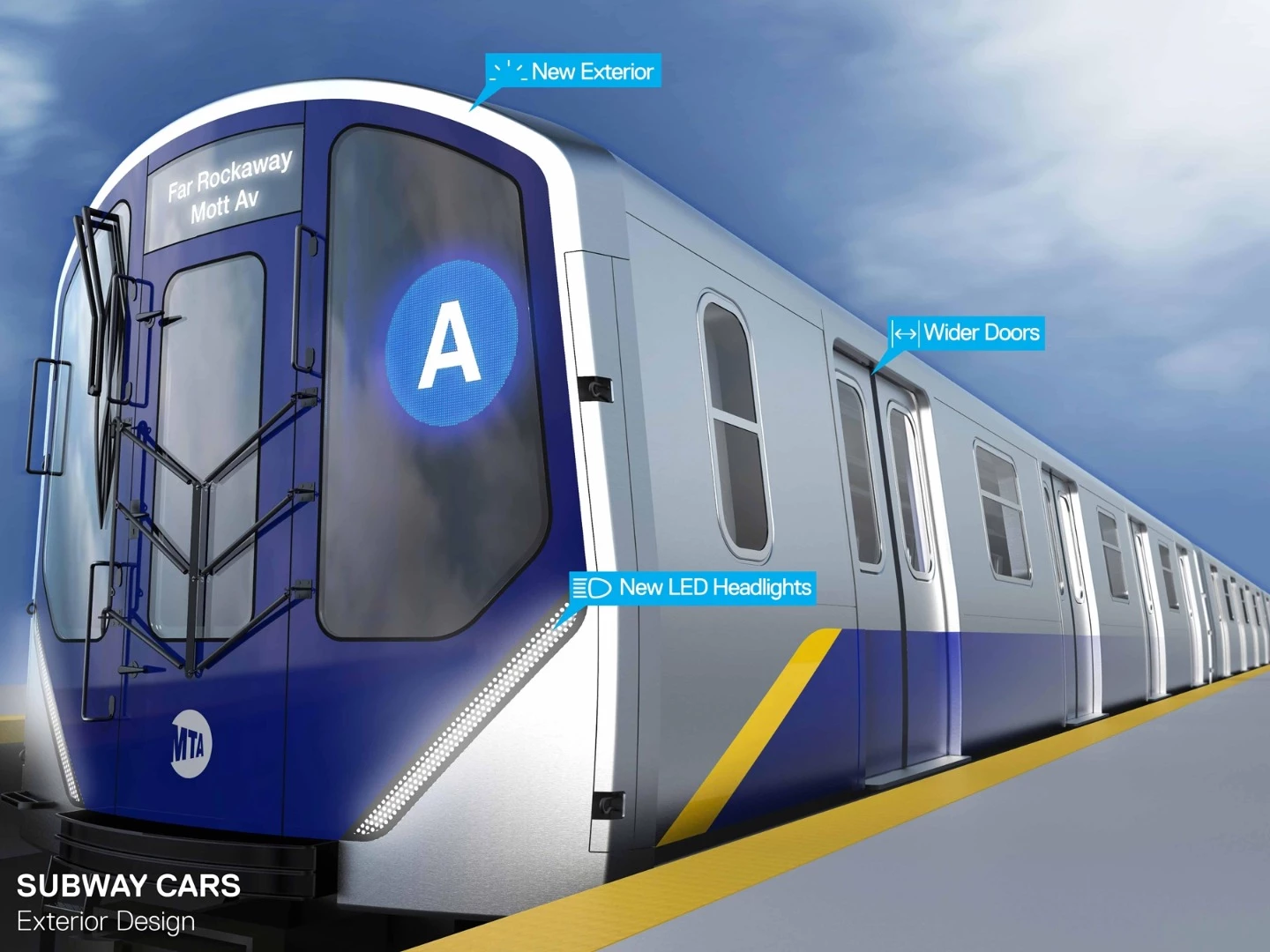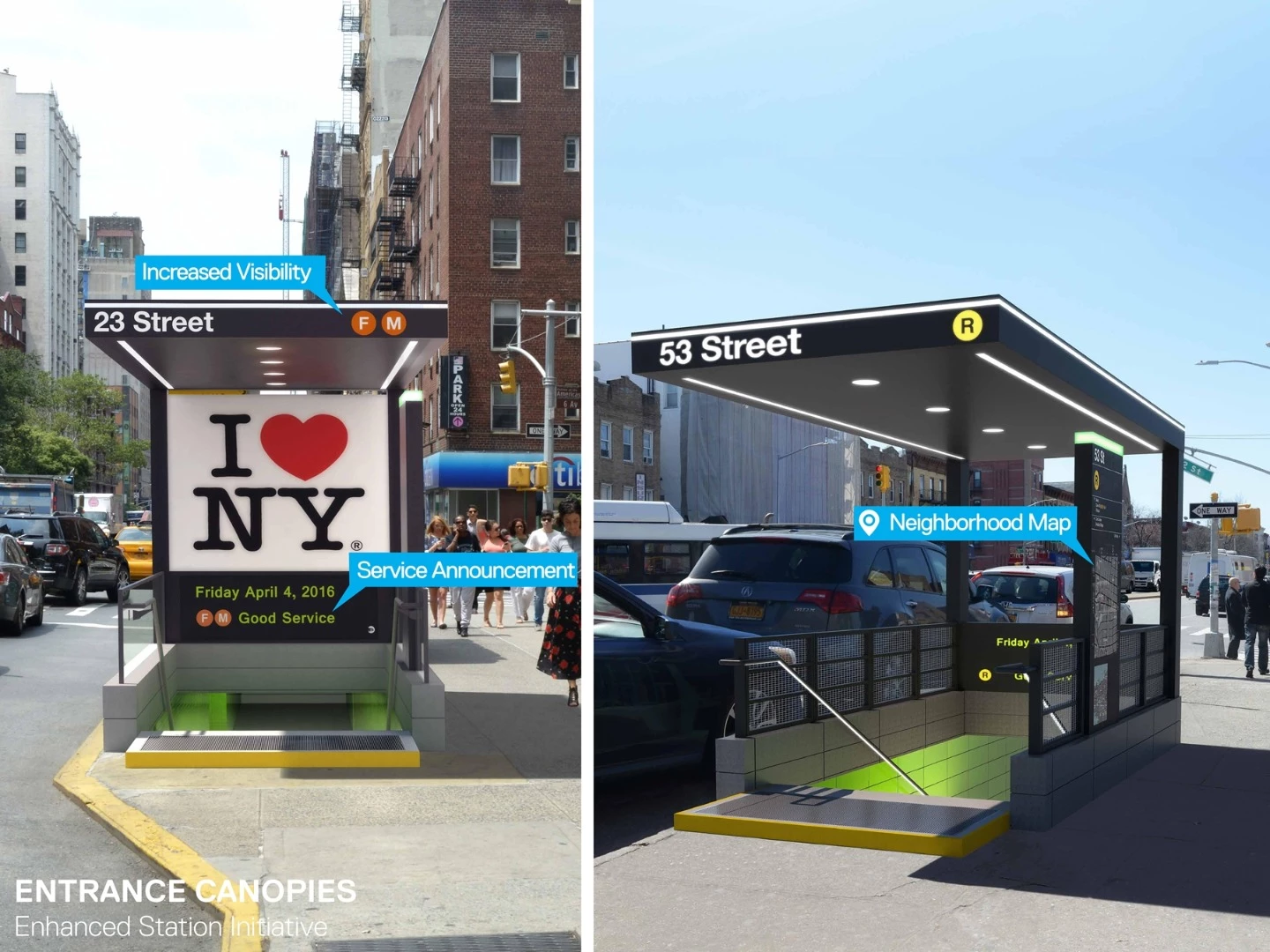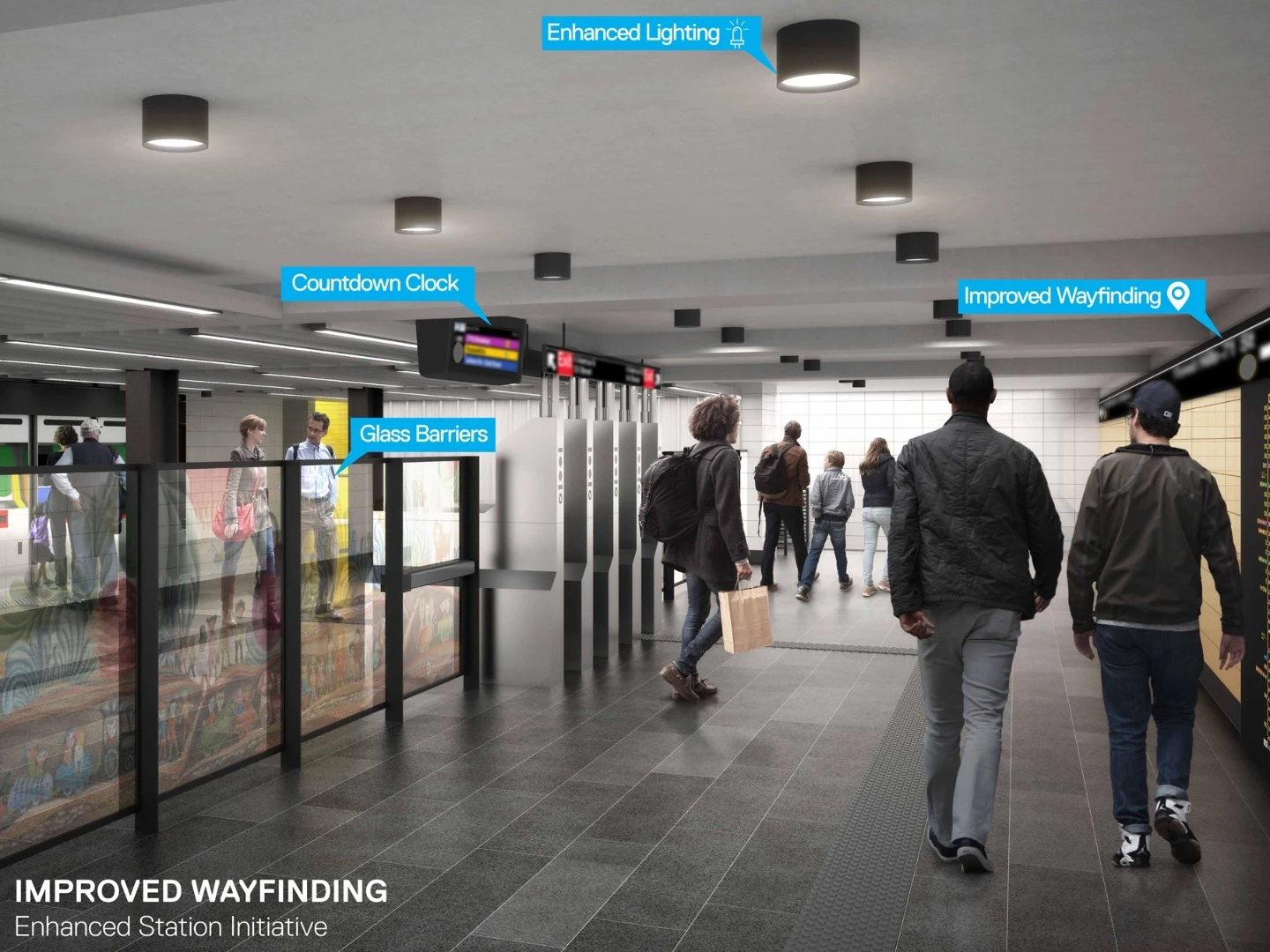Life for commuters on New York's subway system is set to get a little more comfortable, with the announcement that both its trains and stations are set for a revamp. The new subway cars will boast bigger doors for easier access, more standing space, Wi-Fi and USB charging ports.
The updates to the trains and stations are part of the Metropolitan Transportation Authority's (MTA) US$27 billion, five-year Capital Program to renew and expand its network and follow the installation of On The Go! touchscreen information kiosks. In total, 1,025 new subway cars will be rolled out and total of 31 stations renovated, with a further 170 stations set for additional component and renewal work.
Among the aims of the train upgrades are to reduce waiting times and increase capacity. Enlarged door widths, from the current standard of 50 in (127 cm) to 58 in (147 cm), will contribute to the targeted improved waiting times and will help to reduce delays by allowing passengers to board and alight more quickly.
Train capacity, meanwhile, will be increased by 750 of the 1,025 new subway cars having an "open car end" design. This means that doors between carriages will be replaced with an accordion-like connection modules, creating more standing room and allowing for the more fluid movement of passengers.

A variety of new features will improve the comfort and journey experience for passengers, including USB charging ports for mobile devices and on-board Wi-Fi for internet access. Elsewhere, color digital displays will allow for dynamically presented journey information and illuminated door opening alerts and security cameras will promote safety. On their exteriors, the trains will boast large front windows, LED headlights and revised graphics.
Station improvements will include enhanced lighting, refined wayfinding with digital real-time signage, train countdown clocks, improved cellular connectivity and the introduction of Wi-Fi. The MTA says that renovation work will take into account the "architectural legacy of each station," with historical elements being treated sensitively.
The MTA begins issuing requests for proposals this week, with respondent organizations needing to demonstrate their ability to follow design guidelines. Design and production timelines and demonstrable cost-effectiveness will also be key factors in how the contracts are awarded.










